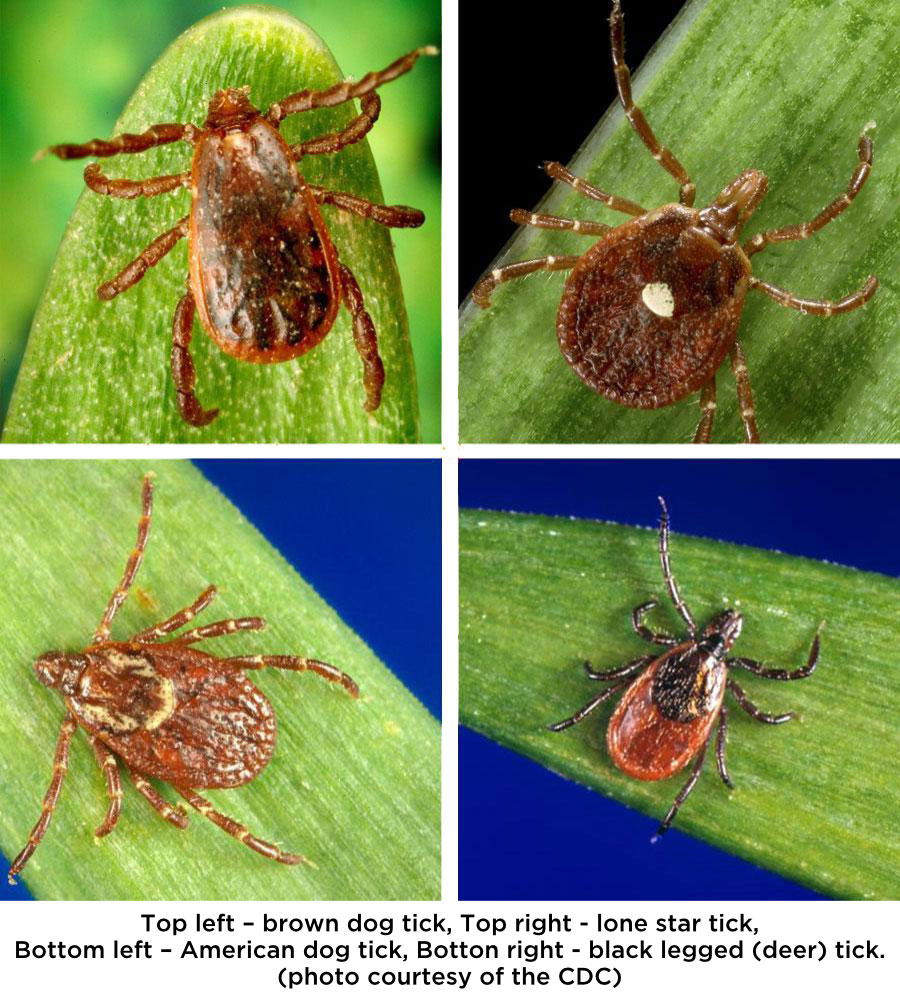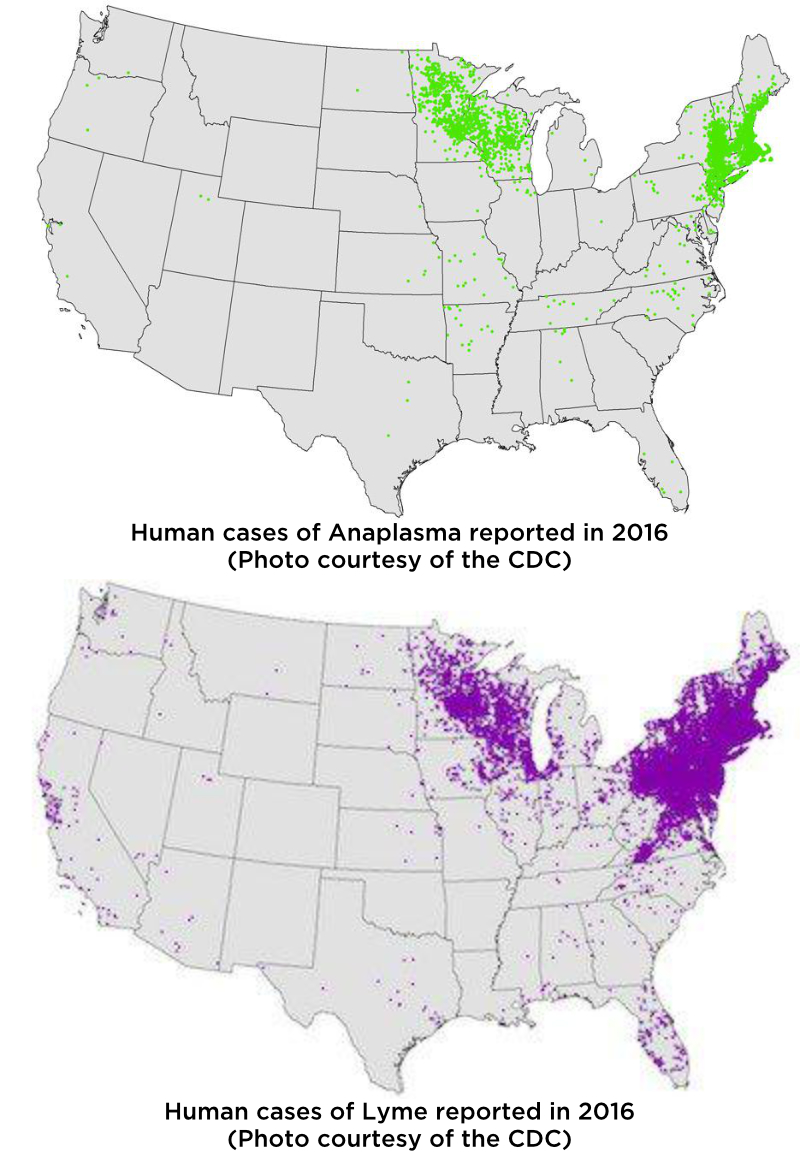HELPFUL ARTICLES
TICK SEASON IS COMING!
Dr. Gemma Gerardi, DVM
Are you wondering about all these seemingly new tick borne diseases? If you’re thinking “Where were these diseases when I was a kid?” or “I’ve never heard of that” you’re not alone. The reason is, many of these diseases actually weren’t around when you were a kid, and they have been increasing exponentially in recent years. These diseases include Anaplasma, Lyme, Erhichia, Babesia, and Powassan. Of these Anaplasma and Lyme commonly affect horses in Vermont. And all are transmitted by the black legged tick (aka deer tick)

If your horse has had a fever in the last several years, its likely that your vet mentioned the possibility of him or her having Anaplasmosis. Anaplasmosis, caused by the bacterium Anaplasma phagocytophilum, used to be called Erhlichia equi, so you might have heard it referred to as“erhlichiosis”. Like many species of bacteria, as more is learned about the genetic make up of the organism, they get re-classified and renamed according to their relationship to other known bacteria.
Anaplasma was first identified to cause disease in humans in the mid 1990’s. It is transmitted by the black legged tick (aka deer tick) and the western black legged tick. In humans, cases of the disease are reported to the Center for Disease Control (CDC). As a result of this reporting, we have more epidemiological information about clinical cases in humans than we do in horses. However, because disease is caused by the same organism in both species, we can draw conclusions about the prevalence in horses. Looking at the numbers of human cases, there were 348 cases reported in 2000, and 5762 cases reported in 2017. And, even though the deer tick inhabits most of the eastern United States, 90% of the cases reported in 2017 were from just 8 states (Maine, Vermont, Massachusetts, New Hampshire, Rhode Island, New York, Wisconsin and Minnesota). Additionally, since 2015, Vermont has had the highest incidence rate of human cases in the U.S.!!
So what is causing this increase in cases? Partly, the tick population has expanded. Partly, we are now on the look out for new cases, and we have diagnostic tests to confirm our suspicions. So, what are the typical clinical signs in horses? Most notably, a fever, often quite high in the 104 degrees range. Many, but not all horses, will develop edema of the limbs or ventral abdomen. Some will show a slightly yellow coloration of their gums and whites of their eyes (jaundice or icterus). Rarely, horses develop neurological disease, and can show profound incoordination.

There are several diagnostic tests available. These include a blood smear, where one can see the organism inside the horses white blood cells, a PCR test, that can identify bacterial DNA within the horses blood, and finally an antibody titer, which looks at the horse’s body’s immune response against the organism.
The good news is, anaplasma is generally very responsive to treatment with tetracycline antibiotics. Horses tend to feel much better after 24-48 hours of treatment, but are treated for 4-5 days (sometimes longer depending on the case). Because the testing is performed at an outside laboratory, when there is a high index of suspicion, we do not wait for test results before starting treatment. Having said that, it is a good idea to submit testing because there are several other diseases that cause similar symptoms. These include Potomac Horse Fever, Corona Virus, and respiratory viruses such as Equine Influenza, Equine Herpes Virus).
So, what can we do to try to protect our horses? There is no vaccine for anaplasmosis. Unfortunately, eliminating all exposure to ticks is impossible. There are topical products that are safe to use on horses. UltraBoss is a permethrin pour on labeled for horses, Freedom 45 is a topical spot on labeled for horses, Frontline spray, although not labeled for horses, has been used with decent results, and vectra labeled for large dogs, can be used on horses. Ticks are out any time the daytime temperature is above freezing. So even though they are most active in the spring, summer and fall, they do not completely go away in the winter.
Lastly, don’t forget to check yourself for ticks after you come home from the barn!




